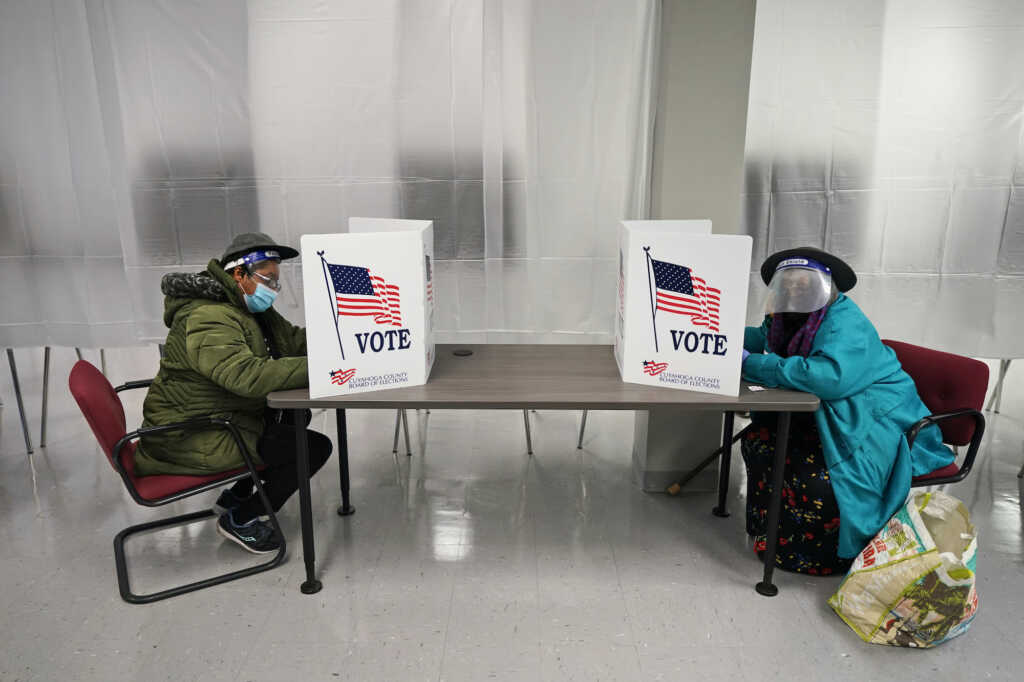Democratic presidential nominee Joe Biden’s running mate, Sen. Kamala Harris (D-Calif.), says she’s “open to” the idea of eliminating the Electoral College. But what would that mean for how America elects her presidents?
Whenever election season rolls around, so does widespread confusion about what actually happens on Election Day every four years. So we spoke with an expert, author and attorney Tara Ross, about the Electoral College system.
Much of the problem, Ross explained, falls back to poor education.
“Nobody has taught us about this,” she said. “I was in my last semester of law school, so I’m in graduate school, and I realize, ‘Nobody’s ever really taught this to me.’ I thought I understood it, but I really didn’t.”
The way many teachers explain the Electoral College “is not flattering,” Ross said, arguing many never take the time to teach students “why it was created, why the founders considered it important, and what benefits it still provides today.”
What happens on Election Day?
Ross said it’s a “complete misperception” to think Election Day in America is one enormous election from coast-to-coast. In reality, it’s 51 smaller elections: one in every state and one in Washington, D.C.
“Each of these elections is purely democratic — one person, one vote,” she said. “Everything you hear people say they want in an election, that’s what’s happening. But it happens at the state level, not at the national level.”
The “Why We Need the Electoral College” author, who lives in Texas, used her own state to explain how the system works.
On Nov. 3, Americans aren’t really voting directly for President Donald Trump or Democratic presidential nominee Joe Biden; they are voting for a slate of electors — Democratic or Republican — who will later cast their votes for the incumbent president or the former vice president.
Because Texas has 36 congresspeople and two senators, it has 38 electors. That same metric applies to every state.
“Our election on Election Day is not an election for president,” Ross said. “It’s an election for who is going to fill those 38 seats. It’s a statewide office that we are holding a statewide election for, presidential electors.”
Most states, she noted, allocate those spots in a “winner-take-all” fashion.
“So if the Republican candidate wins [Texas], 38 Republicans are elected to fill the statewide office of presidential elector,” Ross explained. “If the Democrat wins, then, of course, 38 Democrats are elected to fill the role of presidential elector for Texas.”
Those electors will then vote Dec. 14 for their respective states’ winning candidate, Trump or Biden. There are a total of 538 electors in the Electoral College, requiring candidates to secure 270 votes to win the presidency.
“So that’s how it works,” Ross said.
How does the Electoral College protect election integrity?
The Electoral College system protects voters in two ways.
Referring back to 2016 Democratic presidential nominee Hillary Clinton, who won the country’s popular vote but fell short in the Electoral College, Ross pointed out that the former diplomat’s biggest error was focusing too much on large, urban areas while dismissing more suburban and rural parts of the country. In fact, according to Ross, Clinton’s greatest mistake came in the final weeks of the campaign, when her team was confident she’d win in the Electoral College but were concerned the popular vote could go to then-candidate Trump. To make up that perceived imbalance, Clinton spent a great deal of time in safe, urban areas in an effort to drive up the popular vote to match what she saw as a certain victory in the Electoral College. As we all now know, Clinton ended up beating Trump in the popular vote but losing with the Electoral College, where it really matters.
The Electoral College entices presidential candidates “to appeal to as many people as possible,” rather than spending the majority of their time doling out red meat to their respective bases in politically safe areas, Ross said.
“We’re supposed to do better than that,” she continued. “We’re supposed to focus on the things that bring us together as Americans, to get as many people under the umbrella as we possibly can. And historically speaking, the Electoral College rewards the candidate that does the very best job of that.”
Another way the Electoral College protects voters is by making election fraud and tampering more difficult.
Since Election Day isn’t actually one massive election but 51 local elections, it slows the process down and breaks it up into a lot of different and disconnected pieces.
“In the system that we have, you need several things to go your way before you can steal the election,” Ross said. “One is you need the national electoral vote total to be close, which doesn’t usually happen, actually. Two, you need a handful of states with the right number of electors to also be close, so that flipping those states would be enough. And three, you need to be able to predict in advance which states those are so that you can get it done before the election.”
Accomplishing all those things at once is not impossible, Ross noted, but it’s “very hard” to orchestrate it to give any given candidate the nationwide outcome he or she wants.
While stealing some votes in deeply blue or red precincts might not be as difficult, it’s ultimately unlikely to change the national outcome. The areas to look out for, Ross said, are places where the political makeup is more ambiguous.
Because the Electoral College system slows down the process of electing a president, Ross said, it allows time to “isolate” any problem areas.
“You don’t have to recount the entire country,” she said. “You can focus your attention on the subset of problems, figure it out, and move on to a certain outcome. That is way better than trying to recount the whole country.”
“There’s no perfect system,” Ross added. “But it makes it as difficult as possible to steal an election.”



